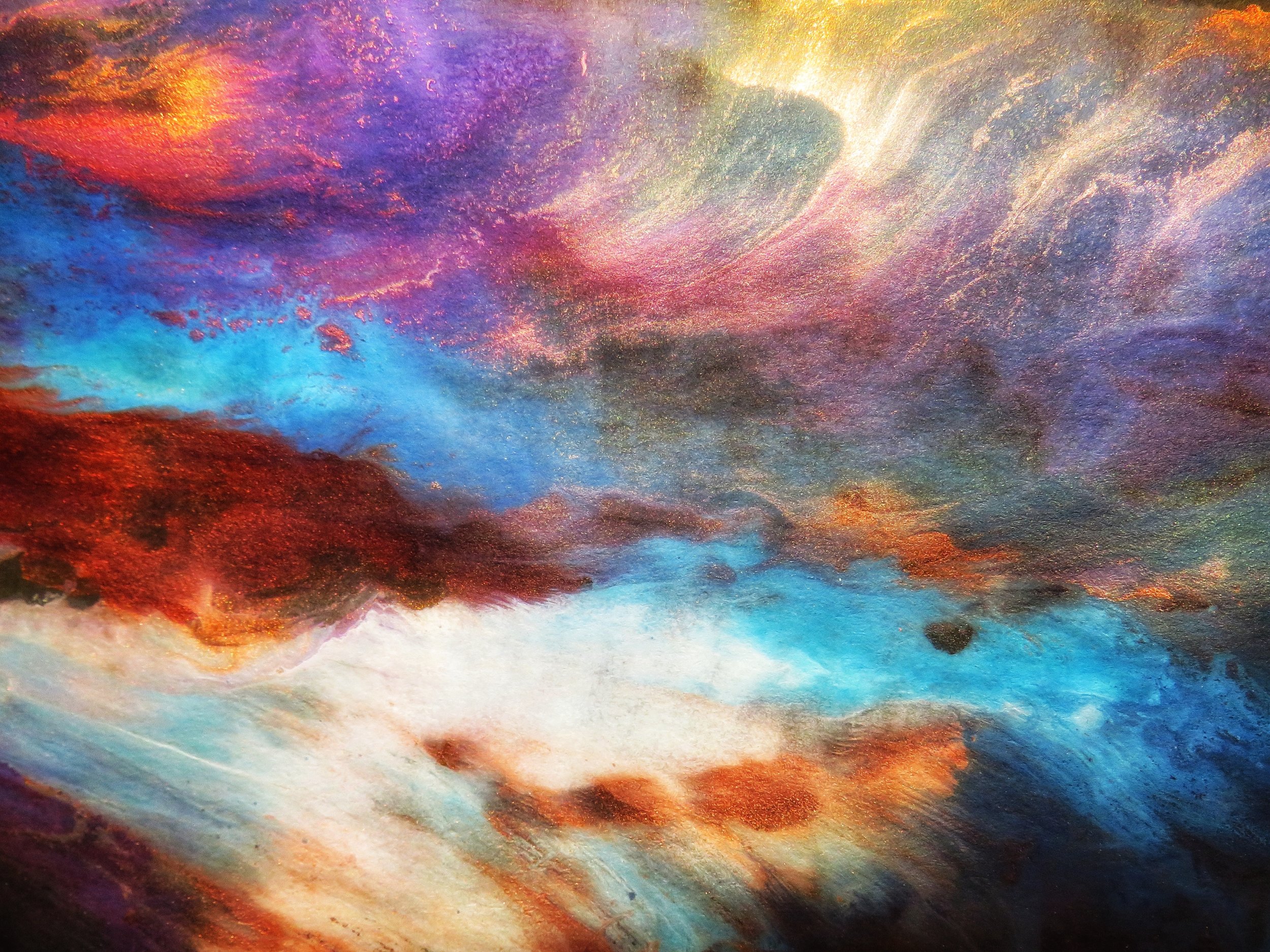
SoSaSe Chocolat Ltd®
&
I Shud Koko®
“I shud KoKo is a registered trademark of SoSaSe Chocolat LtdWe have categorised the range of colours with key letters that help you identify what the ingredients are.
For most spraying with a standard tank or twin tank compressor the general rules are as follows.
Spraying with a Turbine like the Fuji Q5 system or via a larger needle aperture, consideration of over spray needs to be
understood & managed.
Tempering
Each bottle has been tempered using ‘silk’ so you will receive them in a solid state fully tempered.
A very Simple way is to melt in the microwave in short 20 - 30 second bursts, giving the bottle a good shake in between melting. (it will take a few minutes, be patient) Once about half the bottle is melted, continue to shake until it cools to around +28oc, at this point it is ready to use. if you go over +33.8oc you will melt all the Beta5 crystals which are the crystals that are required to make sure the cocoa butter fully crystalises and you will need to re-temper the mix or bottle.
***NB DO NOT ATTEMPT TO MICROWAVE ANY OF THE TYPE ‘C’ COLOURS (METALIC- PEARLYCHROM- SPARKLE - PEARL )
THERE IS A RISK OF SPARKING OR IGNITION***
***Sit them in a pot of warm water until melted
The Cocao butter Class
we regularly run The Cocoa Butter Class, which delves deep into tempering and how to best use the variety of colours we have and some profesional level tuition with tips, tricks & what went wrong with my tempering!
for more information on this class check the “classes area’ of our website for the next one.
The 4 types of coloured cocoa butter ingredients and how they behave.
-

Fat soluble Type A.
These are generally the prime colours that have a fat (lipo) soluble colour powder added to them, they use dyes to completely colour the
cocoa butter. These colours have little opacity and will always need to be backed with a white or lighter colour to help the brightness
come through. They can be blended to make the tertiary colours.
They can be used at a higher temperature range of +27oc - +30oc.
Type A colours will spray through a 0.5mm nozzle with ease
-

Suspension colours Type B.
Pigments & Iron Oxides are used for these colours, specifically White & Black.
Black & White are not colours; they use a pigment (ground minerals) that suspends in the cocoa butter.
The tiny particles are surrounded by the cocoa butter and held in suspension, as the butter gets warmer and more fluid, the particles can
sink or separate away from the butter
If left to settle for any period of time, it needs agitating and mixing again.
Because there is space within the liquid for other colours to mingle, these 2 are very prone to being contaminated by dyes, just a small
drop of another colour will completely colour the mix.
The temperature to use them should be below +30oc because they are prone to separating so easily, a higher temperature will make the
cocoa butter more liquid (less viscose) and as a result the pigment will settle in patches, causing dull spots.
If you use it at a temperature of +26oc or lower, you will see cracks form in the crystalised butter, this is because it dd not have chance to
fully cover the area before it set or dried..
Type B can be sprayed through a 0.5mm nozzle, however they are prone to causing ‘Tip Dry’, this is where the end of the nozzle will
block and cake up, Type B are much better sprayed through a 0.8mm nozzle
-
Interference colours Type C.
These are generally silicate Mica flakes of silver or gold or glitter that are added to fat soluble colours or suspension colours.
These need to be used at a lower temperature of +26oc - +28oc
These are problematic at a higher temperature because the flakes will lay flat when the butter is runnier or more liquid.
They do not spray very well because the small flakes lay flat and don’t sparkle. To get the full sparkle effect they need agitating and the
flakes (although you can’t see them individually) need to be facing different directions (think diamond face) the disruptive form is what
will make them sparkle more in your final design.
Type C hand paint or sponge with a much better final effect.
Spraying type C is much better if you can use them at a lower temperature
Type C need spraying through a 0.8mm nozzle as a minimum, the micron size of the Silicate Mica can cause blockages, going up in too
higher pressure can also cause the flakes to cluster when landing in the surface of spraying.
-
Flavoured particle Type D.
E free colours fall into this category
Cocoa butters will take on most dry particles, the cocoa butter is the carrier of the particle.
Spices, vanilla, root powders can all be used however, the saturation point needs to be considered and also the higher temperature
Root powders or vegetable powders will lose their full colour if you heat them over +44oc during the initial heating or melting of the
butter.
Adding vanilla seeds or spices like cinnamon, paprika or turmeric is a great way to flavour cocoa butter. For each 30g of cocoa butter you
can only add 5g of total weight of product. Adding these will also make you have to consider the shelf life of the butter.
They need using at a lower temperature between +26oc – +29oc.


